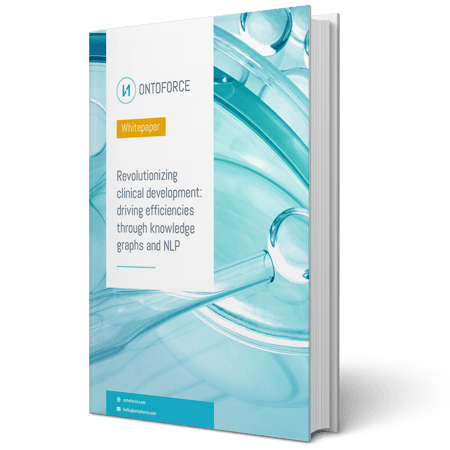
BLOG
NLP is a stand-out solution to address unstructured data and its related challenges, and combined with other types of technologies, like knowledge graphs, NLP has the capability to reach new analysis heights with unstructured data.
The realm of clinical development is a complex and data-intensive field. One of the most significant challenges faced by professionals in this domain is managing and interpreting unstructured data. This data, ranging from patient records and trial reports to scientific literature, presents a unique set of challenges that can impact the efficiency and effectiveness of clinical research. Natural language processing (NLP) is a stand-out solution to address unstructured data and its related challenges. Additionally, combined with other types of technologies, like knowledge graphs, NLP has the capability to reach new analysis heights with unstructured data.
Unstructured data, by its nature, lacks a predefined format or organization. Extracting meaningful information from unstructured data is time-consuming and labor-intensive. Additionally, the quality of unstructured data varies greatly. Inconsistent data formats, errors, and incompleteness can lead to inaccurate analysis and misguided conclusions.
Structured data is typically stored in well-defined formats making it easily searchable and accessible. This organization allows for efficient processing and analysis, enabling users to quickly extract insights and make data-driven decisions. Its predictability and uniform format make it ideal for use in machine learning and other automated processes, where consistent input is crucial for accurate output.
Unstructured data significantly impacts clinical development in various ways. Firstly, the sheer volume and diversity of unstructured data, which includes everything from patient records and trial reports to biomedical research and literature, can be overwhelming. This data often exists in various formats that are not readily amenable to traditional data analysis methods.
Further, the lack of standardization and structure in this data poses considerable challenges in ensuring accuracy and consistency. This variability can lead to difficulties in data integration and interpretation, potentially affecting the reliability of research findings and conclusions.
Processing unstructured data is time-consuming and resource-intensive, sometimes necessitating specialized expertise. While unstructured data holds a wealth of information critical for advancing clinical development, the effort required to manage and analyze it can also slow down decision-making processes, delaying critical milestones in drug development and market delivery.
Using natural language processing (NLP) to address unstructured data in clinical development represents a significant advancement in harnessing the full potential of vast and varied healthcare data. NLP, with its ability to interpret, understand, and process human language, is particularly adept at managing the complexities inherent in clinical and other relevant types of unstructured data.
By applying NLP to unstructured data, researchers can efficiently extract relevant information, identify patterns, and gain insights that would otherwise be challenging and time-consuming to derive manually. This automated processing not only accelerates the pace of clinical research but also enhances the accuracy of data interpretation, leading to more informed decision-making in drug and clinical development.
The integration of NLP with a knowledge graph offers an effective approach to addressing the challenges of unstructured data in clinical development, while driving significant efficiencies and optimizations. Knowledge graphs are dynamic data structures that interconnect diverse entities and the relationships between them, essentially mapping out complex webs of information in an intuitive manner. By portraying data points as nodes and the relationships between these data points as edges, knowledge graphs offer a holistic view of varied datasets.
NLP can be employed to rapidly mine and structure vast amounts of textual data from diverse sources. Once structured, this data can be integrated into a knowledge graph, providing researchers with a comprehensive, interconnected view of all relevant information. When leveraging these technologies simultaneously, this synergy allows for the mapping of intricate relationships between various entities like diseases, treatments, and patient outcomes.
The result is a more holistic and nuanced understanding of medical data, facilitating faster and more accurate decision-making in clinical research. For instance, it can speed up certain processes in the clinical phase by predicting trial outcomes, optimizing patient recruitment, and identifying biomarkers for diseases. The use of NLP and knowledge graphs together not only enhances the efficiency of data processing but also leads to more informed and effective clinical development strategies, ultimately accelerating the journey of medical innovations from the lab to the patient.

In our latest whitepaper, we’re covering more on how life sciences organizations can leverage NLP and knowledge graphs together to tackle unstructured data and drive clinical success. The whitepaper provides precise steps for utilizing these technologies in tandem, along with practical case studies that demonstrate what’s possible when combining the strengths of NLP and knowledge graphs.
Access the whitepaper here >>>
© 2025 ONTOFORCE All right reserved